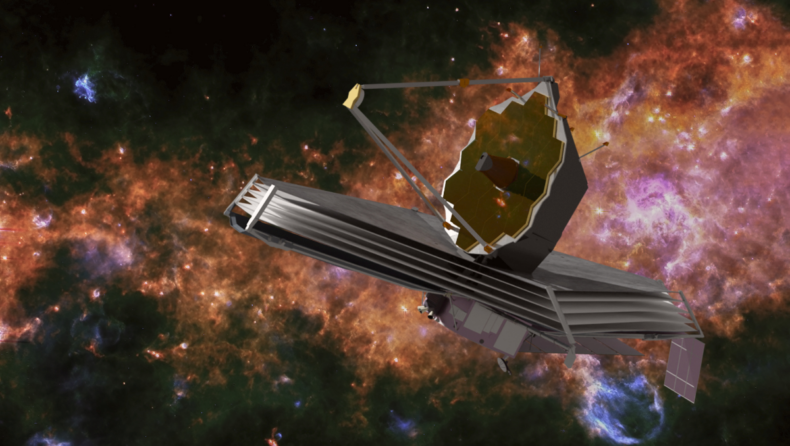The Galaxy Zoo citizen project spotted a multi-armed galaxy merger, and the Hubble space telescope has amazed us with beautiful snaps of it.
A Hubble-space telescope has photographed a galaxy named CGCG 396-2. Entire galaxies can merge and smash into one another in the depths of space on occasion, ejecting dust and debris that will eventually give rise to new stars.
The sighting is a treasure from the citizen science project, “Galaxy Zoo“, according to NASA. For this one-of-a-kind effort, millions of volunteers identified galaxies to aid scientists in resolving a challenge of cosmic dimensions. The galaxy merger is 520 million light-years away from the earth and is in the direction of Orion’s constellation.
The Galaxy Zoo Project:
NASA developed an online portal for the research and requested citizen scientists to help categorise more than 900,000 galaxies by eye. The Galaxy Zoo project has classified over 40 million galaxies and produced over 100 peer-reviewed scientific articles since its debut in 2007.
Its success strongly influenced the Zooniverse portal, which encompasses multiple projects employing the same methodologies in astronomy-related subjects.
The European State Agency mentioned
“The Galaxy Zoo project originated when an astronomer was set an impossibly mind-numbing task, classifying more than 900,000 galaxies by eye,”
Several volunteers identify each galaxy in the Galaxy Zoo project since having multiple independent classifications enables the scientists to evaluate the credibility of the results. Scientists can allocate expensive telescope time using the Galaxy Zoo categories according to the requirements of their research endeavours.
The Science Behind the Project
The Galaxy Zoo project requests volunteers to investigate galaxies and comprehend these processes and figure out what galaxies can tell us about the past, present, and future of the Universe as a whole. Each system has billions of stars, a spectacular life, and connections to its surroundings and other galaxies.
The project is based on the amazing discovery that a galaxy’s form can reveal much about it. If you find a system with spiral arms, you’ll likely witness a whirling disc of stars, dust, and gas.
However, if you find one of the large stars known as ellipticals, you’re likely looking at a more developed system that has long since stopped producing stars.
MORE ABOUT GALAXIES
The pasts of the galaxies are also disclosed; that elliptical galaxy was probably created by the colliding of two smaller galaxies. Other details like distorted discs, enormous bulges, or long streams of stars attest to the intricacy of these galaxies’ lifetimes.
The Dark Energy Camera Legacy Survey revealed new galaxy pictures. The Sloan Digital Sky Survey is 10 times less light-sensitive than DECaLS because of its larger telescope. The outcome is better detail.
Galaxy Zoo asks participants to study galaxies and understand their processes to learn about the past, present, and future of the Universe. Each system has billions of stars, a spectacular life, and connections to its surroundings and other galaxies.
The idea is based on the discovery that a galaxy’s shape can disclose much. If you find a system with spiral arms, you’ll usually see a whirling disc of stars, dust, and gas with plenty of fuel for star formation.
If you locate a huge elliptical star, you’re likely gazing at a system that has finished creating stars.
The galaxies’ histories are also revealed; the elliptical galaxy was likely produced by two smaller galaxies colliding. Distorted discs, massive bulges, and extended star streams are testaments to the galaxies’ complexity.
The Dark Energy Camera Legacy Survey yielded galaxy images. Sloan’s larger telescope makes it 10 times less light-sensitive than DECaLS. The details improve.
The Hubble Space Telescope:
This telescope has been capturing various galaxy mergings. In February 2022, it spotted IC 2431. This object exhibits what might occur when galaxies collide and merge into one another. It is situated 681 million light-years away in the constellation of Cancer.
In October 2021, two galaxies, namely NGC 5953 and NGC 5954, were discovered. The two galaxies are so close to one another that they also have a common name: Arp 91. This object, which is 100 million light-years away, exhibits the severe circumstances that can develop when two massive galaxies collide.
The most effective and capable astronomical instrument ever created is the Hubble Space Telescope. Our perspective of the cosmos has undergone a radical shift, particularly regarding the Hubble expansion and the age and formation of galaxies.
The Hubble is undoubtedly worth the hassle, despite its astronomical cost and protracted struggle to launch, and it will continue to function for many years to come. Hubble’s days may be numbered now that NASA’s James Webb Space Telescope is properly funded and progressing.













